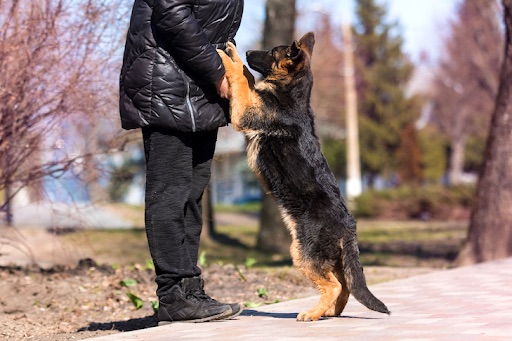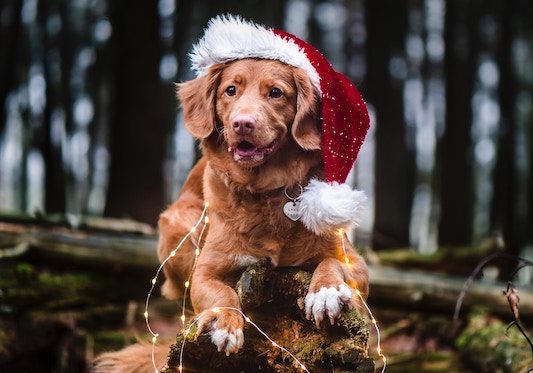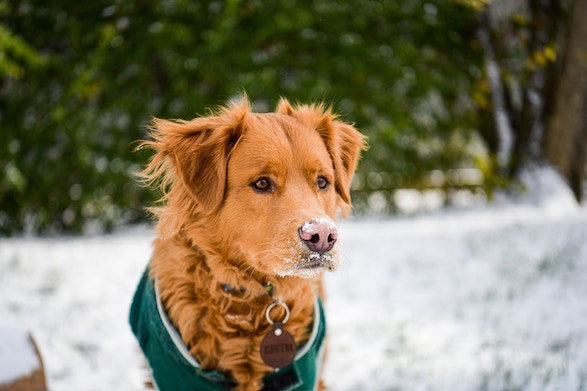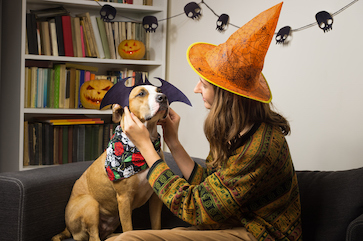When you get a new puppy, you want to give them all the attention, all the time! It’s so cute when they wiggle and jump up, asking for pets and love from us… until it isn’t. As our puppies grow taller and heavier, what was once a sweet behavior can feel like anything but. Jumping up becomes a pesky and even dangerous habit that dog owners tend to encourage early and often with our new pups, even if we don’t realize we are doing so. And unfortunately, the longer this behavior goes on, the harder it will be to break in the future.
So how do we discourage jumping?
First, we look at the function of the behavior: gaining attention. Jumping is a behavior that continues when it garners attention. That means any attention, good or bad, actually reinforces the behavior. While it’s easy to see how petting or talking to our puppies when they jump up rewards the behavior, it’s important to keep in mind that even attempting to discourage the behavior by yelling at or pushing your dog off is giving attention to that behavior and can make jumping more likely to occur in the future.
Thus, the first step to training your dog not to jump is to make sure you do not give them attention of any kind for doing so. When your dog jumps up, simply ignore them. Do not look at them, talk to them, pet them, or attempt to remove them. The less of a reaction they get for jumping, the more boring it will be, and the less likely they will do it in the future.
Next, we need to teach our puppies a way to ask for attention politely. We do this by training them to automatically sit down in front of us when they want attention.
Here are the steps to teaching, what we call, an automatic sit.
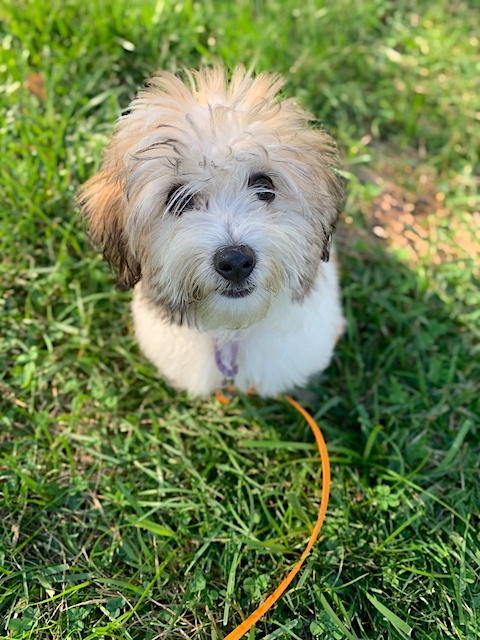
How to teach the “Auto-sit”
Getting started
- Hold food in your hand and talk to your puppy.
- Wait for them to spontaneously sit. As soon as their bottom touches the ground, say “good” and feed them.
- If they do not spontaneously sit, put the food close to their nose, guiding it up and over their head to “lure” them into a sitting position. As soon as their bottom touches the ground say “good” and feed them.
- Take a step back to encourage your dog to stand. Trial 1 is complete!
Building duration
- Next, start to build duration in the sit. Say “good” as soon as your puppy’s bottom touches the ground, then continue feeding for as long as your dog remains seated.
- Once your dog stays in the sit for ~3 seconds at a time, begin petting them with the other hand as you feed.
- If at any point your dog stands up, immediately stop petting and/or feeding. Wait until they sit down or use the food to lure them back to the sitting position.
- Slowly fade out the food. Pull your food hand behind your back, and continue to pet with the other hand, offering food less and less frequently until no food is needed and your dog sits while being petted.
Increase the difficulty
Whether you are inside, outside, at a store, or visiting a friend’s home, your puppy should sit for attention. Ask all family members and every person your puppy meets to pet them only when their bottom is on the ground. It will be hardest for your dog to do this behavior when meeting strangers, but eventually, they will learn that they must sit – and not jump – to get attention from anyone!
- Once your dog has mastered auto-sitting for you, increase the difficulty by purposely trying to get them excited, while waiting for the auto-sit to pet them.
- Require them to sit for new people. If your puppy is struggling to do this, we recommend you shorten or step on their leash, and use a small hand signal such as drawing your hand upward toward your belt or chest area.
- If they still struggle to sit for other people, go back to basics. Hand a few treats to visitors or friendly people you meet on walks, and ask them to use the treat to get your puppy to sit, and then feed and pet them.
- As your dog practices more and more with distractions and new people, you will be able to fade out the food and hand signals so the sit becomes truly automatic!
It’s important to be consistent with your response to jumping. If you need help getting your dog to sit for attention, we recommend you reach out to your local behavior consultant. Beyond the Dog would love to help in our Private In-Home Consultations where we talk about all things puppy!
